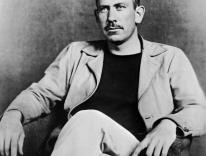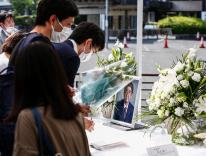FRANCIS & THE FIFTH CRUSADE
Thank you for Paul Moses's article on St. Francis of Assisi and Sultan al-Kamil (“Mission Improbable,” September 25). Francis was not alone in trying to resolve the conflict through conversion—St. Louis would try that approach in 1270, and Pope Innocent III had himself called on the Sultan to convert before the Fifth Crusade began. Still, it is important not to overlook the reasons for the crusade. The crusaders saw themselves as liberators of lands that had been seized from Christians. They had also been told by Armenian and Egyptian Christians of the persecution of Christians in the East. Finally, there was the loss of Jerusalem to Saladin. Al-Kamil was attempting to restore the unity of Saladin's empire under himself. He was willing to negotiate with Christians but not to make serious concessions that would impede such an empire. He offered the return of Jerusalem under conditions that made it virtually impossible to accept. Francis's aims were not in opposition to those of his fellow Christians. He shared their desires and worked for them in a peaceful way.
James M. Powell
Fayetteville, N.Y.
THE AUTHOR REPLIES:
My thanks to Professor Powell for reading the article. I am indebted to him for the important scholarly work he did on the Fifth Crusade and for his excellent article (Medieval Encounters, June 2007) explaining why Francis's journey to the sultan was a mission of peace. For me, what distinguished Francis's effort to convert the Muslim leadership is that Francis approached the sultan unarmed and powerless, whereas Innocent made his offer in a letter while at the same time planning a war and using aggressive rhetoric to build support for it. There was no hint of coercion in Francis's attempt.
Paul Moses
WHOSE EXPERTS?
In her column in the September 11 issue (“Moving Beyond the Culture Wars”), Cathleen Kaveny's misreads Gilbert Meilaender's essay “End of Discussion” (August 14) as a eulogy for President George W. Bush's Council on Bioethics; she also fails to address Meilaender's real argument.
Meilaender does not defend or even discuss the work of Bush's Council on Bioethics. Instead, he describes what “applied” bioethics is and isn't, and makes an argument about how public bioethics commissions can best advance it. (It's such a fine piece that the pastor of my “liberal” Catholic parish in Baltimore chose to reprint it in our parish bulletin.)
Meilaender claims that the lack of a shared morality in our pluralistic society has led doctors and politicians to turn to ethics “experts” for technical solutions to problems that are essentially moral. But the experts have turned out to be as confused and divided (into groups of utilitarians, communitarians, libertarians, contractarians, etc.) as the doctors and politicians who seek their advice.
Hence the value of a broad commission of people from different political and professional backgrounds, such as the one established by President Bush. Such a commission can—through a process of constrained disagreement—disseminate thoughtful reflections to the public rather than prescribe scientific policies.
Paul McHugh, MD
Baltimore, Md.
The writer was a member of the President's Council on Bioethics.
THE AUTHOR REPLIES:
Gilbert Meilaender argued that President George W. Bush's Bioethics Council did two things right. It addressed the right questions—big normative questions about the meaning of human life and the nature of suffering—and it brought together a sufficiently diverse group of people to do it well. I disagree on both counts.
As McHugh points out, the council's membership did exhibit professional diversity. But, to use his term, that is diversity of “technical” competence, not diversity of moral worldview. Two lawyers (Robert George and Mary Ann Glendon), a theologian (Gilbert Meilaender), a political scientist (Jean Bethke Elshtain), and a physician (Leon Kass), all closely associated with the theoconservative magazine First Things, will certainly give you an array of academic prowess. They will not, however, generate a broad range of religious perspectives on the big questions so important to Meilaender.
The fundamental problem with the Bush council was that its membership reinforced the dichotomous “culture war” mentality that President Bush himself endorsed. Perhaps McHugh thinks that a sharp contrast between conservative religious voices and secular progressive voices fosters a salutary process of “constrained disagreement.” I find the constraints too severe because they vastly oversimplify the religious, moral, and political views of contemporary Americans.
Cathleen Kaveny
TODAY'S PRIESTLESS
Thanks for the fine essay by Kenneth L. Parker on the Nubian church (“Priestless,” September 25). In the far northern Adirondacks, the territorially huge diocese of Ogdensburg on the Canadian border will soon be nearly priestless. Our priest travels forty miles round-trip for one Mass a week on Saturday afternoon. He comes over the mountain, sometimes in blasting winter weather. He is like the Jesuit missionaries of old. We have few priests in the diocese and most are nearing retirement age. At present we don't even have a bishop. Our beautiful little wooden Adirondack church was built in the nineteenth century by French, Irish, Polish, and Lithuanian workers. The stations of the cross are in French. These men and women had a vision of a flourishing Catholic future. Our bishops, with their incessant political meddling, have forgotten us.
Dick Gaffney
Keene Valley, N.Y.
CATHOLIC & FEMINIST
As a woman who also considers herself both Catholic and feminist, I loved the September 11 issue. Thank you to Kathleen Sprows Cummings for her ruminations on the Mâcon myth, and to Margaret O'Brien Steinfels for her evocative and trenchant piece about growing up Catholic in Chicago. Eduardo Peñalver's review of books about fatherhood provided an apt counterpoint. I will pass this issue along to my daughter, a first-year student at Smith College. She, too, calls herself both Catholic and feminist. She will devour these articles.
Zsuzsanna Kadas
Foote Shelburne, Vt.
Please email comments to [email protected] and join the conversation on our Facebook page.
Previous Story
New source for Catholic news in Chicago deserves support
Next Story
Stimulate


